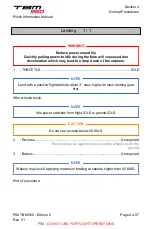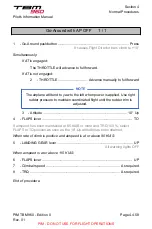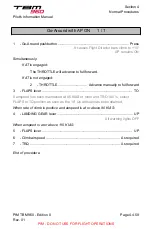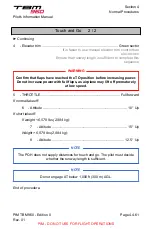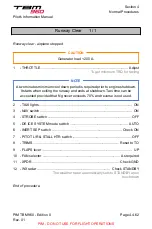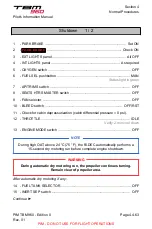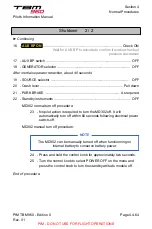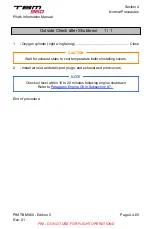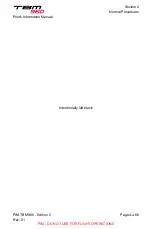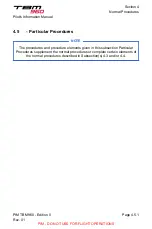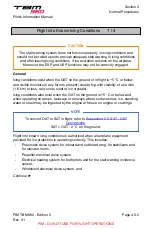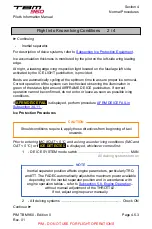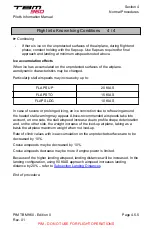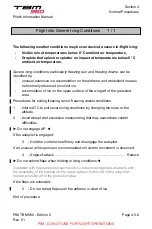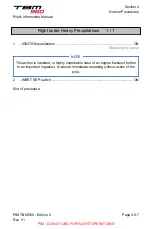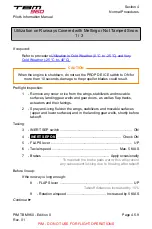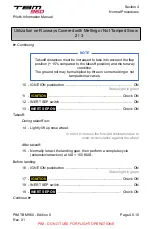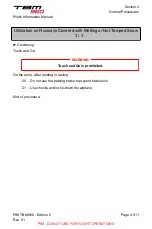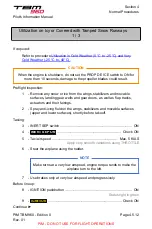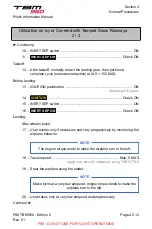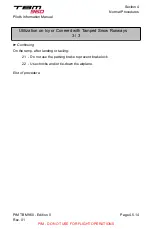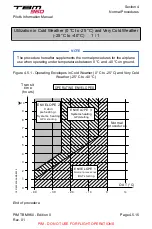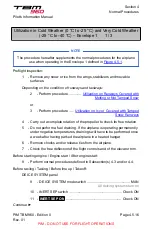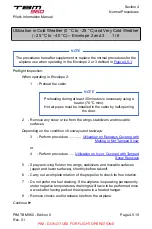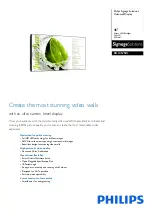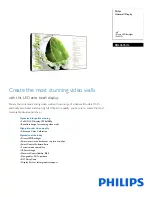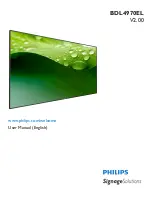
Flight into Known Icing Conditions 4 / 4
► Continuing
-
If there is ice on the unprotected surfaces of the airplane, during flight end
phase, conduct holding with the flaps up. Use flaps as required for final
approach and landing at minimum airspeeds noted above.
Ice accumulation effects
When ice has accumulated on the unprotected surfaces of the airplane,
aerodynamic characteristics may be changed.
Particularly stall airspeeds may increase by up to:
FLAPS UP
20 KIAS
FLAPS TO
15 KIAS
FLAPS LDG
10 KIAS
In case of severe or prolonged icing, an ice concretion due to refreezing around
the heated stall warning may appear. Above-recommended airspeeds take into
account, on one side, the stall airspeed increase due to profile shape deterioration
and, on the other side, the weight increase of the iced-up airplane, taking as a
basis the airplane maximum weight when not iced-up.
Rate of climb values with ice accumulation on the unprotected surfaces are to be
decreased by 10%.
Cruise airspeeds may be decreased by 10%.
Cruise airspeeds decrease may be more if engine power is limited.
Because of the higher landing airspeed, landing distances will be increased. In the
landing configuration, using 90 KIAS approach airspeed increases landing
distance by 20% – refer to
.
End of procedure.
Pilot's Information Manual
Section 4
Normal Procedures
PIM TBM 960 - Edition 0
Rev. 01
Page 4.5.5
PIM - DO NOT USE FOR FLIGHT OPERATIONS

